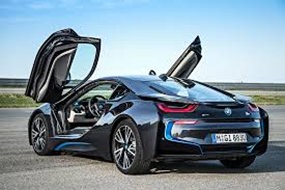Lexus chief backs fuel cells, not hybrid technology, as the propulsion of the future. The head of Lexus’s international division has taken a shot at plug-in hybrids as the company’s rivals go more towards that technology.
Lexus executive vice-president international Mark Templin says the company is not rushing to adopt plug-in technologies, despite parent company Toyota selling a plug-in version of the Prius in the US.
 BMW i8
BMW i8
“I believe that plug-in hybrid is just a stepping stone to the next technology, which is fuel cell,” he says. “Most consumers don’t use them the way they’re designed to be used. Most people don’t plug them in all the time.
“Governments give tax breaks, or regulations are pushing people, to do that but the reality is that in markets where they are being sold today, most people don’t plug them in all the time. They just drive them like a normal car.”
Templin says people continue to fill their cars with petrol and the benefits of reducing CO2 emissions – the reason for governments subsidizing the technology – are not being realized.
Lexus is believed to be working on a fuel-cell version of its LS limousine that could break cover in the next couple of years.
Its approach contrasts with that of BMW, Mercedes-Benz and Audi, which are pushing ahead with plug-in variants, despite the fact that BMW is also flirting with hydrogen cars.
Audi plans to launch at least one plug-in hybrid model a year.
Benz will roll out 10 new plug-in hybrids by 2017.
Daimler board member Dr Thomas Weber says, “The plug-in hybrid is an investment in the future of Mercedes-Benz and we believe it will become established as the successful technology for maximum efficiency coupled with powerful dynamic performance.”
Rival Audi plans to launch at least one plug-in hybrid model a year, while BMW has launched the i3 and i8 plug-ins already.
Porsche has plug-in versions of the Cayenne hybrid and Panamera sedan and its 918 sports car is also a plug-in. Research and development head Wolfgang Hatz is a fan of the technology.
Where does the hydrogen come from?
“I believe that plug-in is a very nice technology. You can drive locally emissions-free,” Hatz says. “We have the SUV, the sedan and the sports car. So in each market we are present we have a concept.”
He says fuel-cell vehicles aren’t on the company’s radar. “I don’t think a 911 hydrogen fuel-cell car is the right answer. My doubt is, where does the hydrogen come from?”
Critics of fuel-cell vehicles point out that the most affordable way to produce hydrogen is through fracking, which creates questions about environmental friendliness. On the other hand, many argue electric cars plugged in to a grid powered by coal are no better than petrol cars.
So is the proposed Lexus the first hydrogen car? No, it should also be remembered that Honda released its FCV some years ago called the FCX Clarity. Production began in June 2008. It was introduced in Japan in November 2008. The FCX Clarity was available for lease in the U.S., Japan and Europe. In the U.S., it is only available to customers who live in Southern California where several hydrogen fuel stations are available. As of 2010, 20 FCX Clarity cars were leased for US$600 a month, which included collision coverage, maintenance, roadside assistance and hydrogen fuel. In 2014 Honda announced the end of production of the FCX Clarity for the 2015 model. From 2008 to 2014, Honda leased a total of 45 FCX units in the US. There are around 10 others on lease in Japan and another 10 in Europe. In 2010, it was reported that there are a total of 50 FCX Clarity available for lease in the U.S.
However, before that, there was the BMW Hydrogen 7. The BMW Hydrogen 7 was a limited production hydrogen vehicle built from 2005-2007 by BMW. The car was based on BMW’s traditional gasoline powered BMW 7 Series (E65) line of vehicles, and more specifically the 760Li. It uses the same 6 liter V-12 motor as does the 760i and 760Li; however, it has been modified to also allow for the combustion of hydrogen as well as gasoline, making it a biofuel engine. Unlike many other current hydrogen powered vehicles like those being produced by Honda, General Motors, and Daimler AG – which use fuel cell technology and hydrogen to produce electricity to power the vehicle – the BMW Hydrogen 7 burns the hydrogen in an internal combustion engine.
Once again, further development has been stymied through a lack of infrastructure. There are more “top up” stations for battery cars than for hydrogen cars, so the plug-in is much more viable than pure hydrogen cars.




